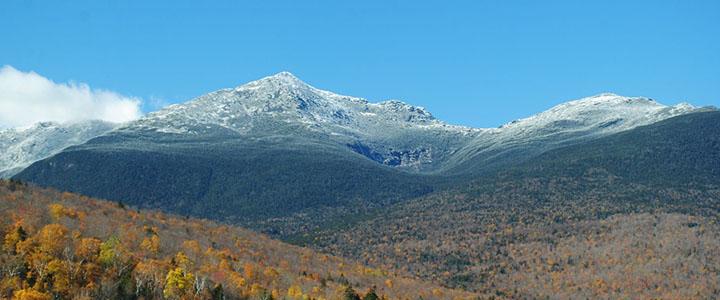
Commissioner's Column: One Good Thing Happened in 2020
Every new year comes with a time of reflection. Looking back on a challenging 2020, there was often little occasion for celebration. However, there was one good thing that happened, specifically regarding New Hampshire’s air quality: there were no air quality exceedance days in 2020! This has never happened in the history of NHDES’ record keeping. An exceedance day is a day when air quality exceeds the level of the National Ambient Air Quality Standard, (NAAQS). It should be noted that the NAAQS allow for a few exceedances each year for most air pollutants. An actual NAAQS violation is triggered when enough days exceed the level of the NAAQS occur over a several-year period. New Hampshire has not had any NAAQS violations in recent years. We should also remember that the NAAQS are reviewed periodically and tend to get more stringent over time as new and improved scientific studies find evidence of negative impacts of air pollution on public health at lower concentrations.
What led to the great air quality in New Hampshire during 2020? There are a few factors to consider; one of them is reduced emissions, from long-term efforts to reduce emissions. New Hampshire has been measuring a trend of lower pollution concentrations for over 20 years. The emission reductions in 2020 were unique, particularly during the beginning of the COVID-19 pandemic when stay-at-home orders were issued in New Hampshire and other jurisdictions. While people were staying home more and commuting less, emissions from mobile sources dropped. Traffic count data showed that total vehicle miles traveled were clearly lower in 2020 than in previous years. Lower nitrogen oxide emissions from motor vehicles could have contributed to less production of ozone and secondary formation of particle pollution.
Another factor, one that is more out of our control, is the weather. Certain meteorological conditions can either support good air quality or contribute to elevated levels of air pollutants. During the summer months, when ozone is the primary pollutant of concern, winds from the west and southwest, where there are an abundance of fossil fuel-fired power plants, can transport ozone and its precursor pollutants into New Hampshire. Similarly, winds from the southwest can carry ozone and its precursors from the “Urban Corridor,” a region that stretches from Washington, D.C. to Boston. This pollution transport, combined with New Hampshire’s own emission sources, can lead to poor air quality and exceedances of the ozone NAAQS. Even though record-breaking warm temperatures were seen in New Hampshire and across the nation during 2020, it is possible that other meteorological conditions, such as wind direction, did not align with the direction of upwind pollution sources, resulting in cleaner air and no exceedance days.
In the winter, when particle pollution (PM2.5) is the primary air pollutant of concern, valley communities such as Keene can experience temperature inversions. These inversions occur when warmer air aloft traps colder air below it, along with pollutants, at ground-level. These inversions can be particularly strong and long-lived in valleys. Residential heating with wood can contribute to higher levels of PM2.5 when thermal inversions occur. Analogous to summertime ozone in 2020, it may be that winter meteorological conditions were not conducive to PM2.5 buildup. Keene has experienced lower PM2.5 concentrations over the past few years, as a result of cleaner wood burning stoves replacing older dirtier stoves and less air pollution transport from upwind areas.
Whether the particularly good air quality of 2020 was a result of long-term local and regional air pollution reduction efforts, the reduced human activity due to the pandemic, coincidental meteorological phenomena, or a combination of all of these factors, the first-ever year without a single exceedance day is a significant milestone. This achievement is great for our residents, but we must remain watchful as unhealthy air pollution levels still exist in neighboring areas of southern New England, and the NAAQS, which serves as our benchmark, are subject to review and revision. While 2020 was a challenging year for everyone and one that will not soon be forgotten, NHDES will remember it as the year of No Air Quality Exceedances!




